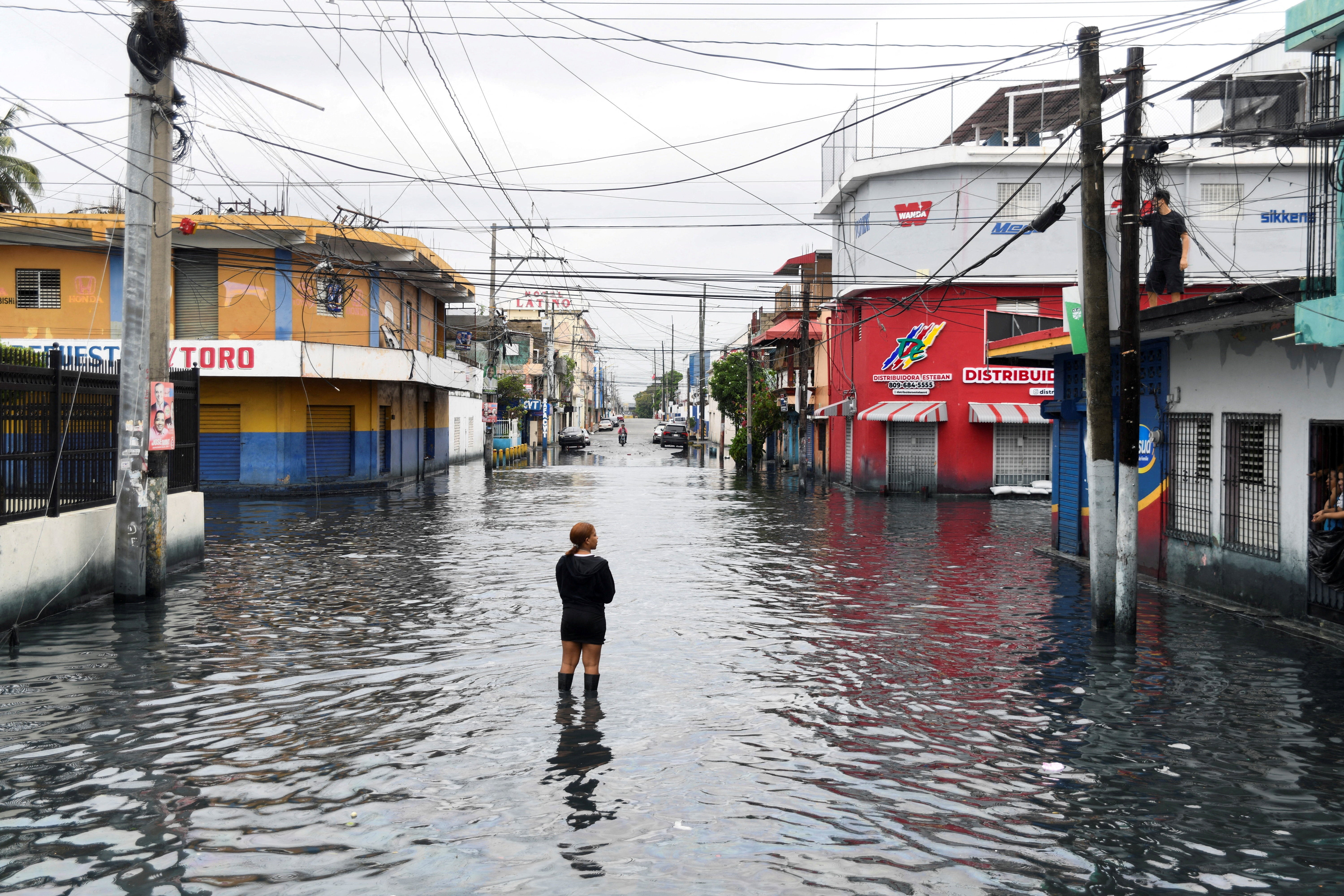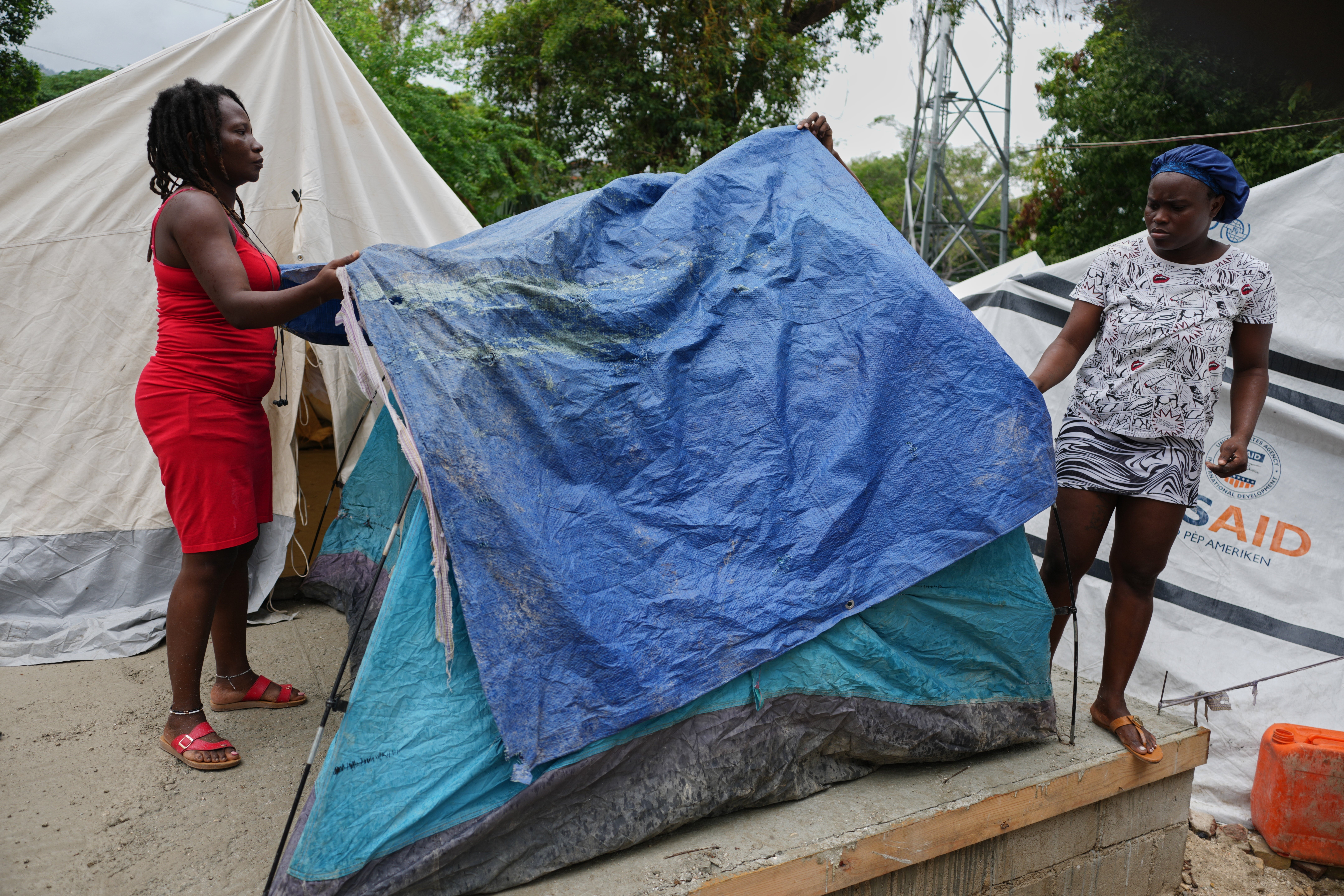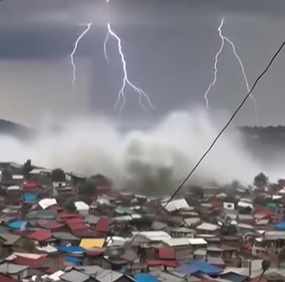Melissa becoming major threat to Jamaica, Haiti, Dominican Republic
Melissa is expected to strengthen from a tropical storm into a major hurricane this weekend, and it could bring “life-threatening and catastrophic” flash flooding and landslides to Jamaica, Haiti and the Dominican Republic early next week, the Miami-based National Hurricane Center warns.
Melissa, the 13th named storm of the Atlantic season, isn\\\’t expected to have major impacts on the mainland United States.
Melissa\\\’s forecast and path
Advertisement
On Friday night, Melissa\\\’s core was about 180 miles southeast of Kingston, Jamaica, and about 245 miles southwest of Port-au-Prince, Haiti, the hurricane center said. Maximum sustained winds were 65 mph, with tropical storm-force winds extending some 140 miles east from the storm\\\’s center. It was inching north at 3 mph.

It was forecast to become a hurricane by Saturday and a major hurricane — meaning a Category 3 or higher — by Sunday.
“It\\\’s going to intensify very rapidly,” CBS News weather anchor Lonnie Quinn said Friday evening.
Jamaica, Haiti and eastern Cuba should brace for “catastrophic rainfall, up to nearly 3 feet of rain,” Quinn said. “Mountainous terrain — there\\\’s going to be mudslides. I am fearful for what we will find by the time we get into next week for this portion of the Caribbean.”
Advertisement
On top of that, he warned, the storm could be packing 140 mile per hour winds.
“Jamaica, I think, is going to take the worst of it,” Quinn said.
A hurricane warning was in effect for Jamaica. A hurricane watch and a tropical storm warning were in effect for the southwestern peninsula of Haiti, from the border with the Dominican Republic to Port-au-Prince.

Although Melissa was moving north Friday, the hurricane center said it was forecast to take a turn to the west on Saturday and continue that westward movement through Monday.
“On the forecast track, the center of Melissa is expected to move near or over Jamaica early next week and could be near or over eastern Cuba by the middle of next week,” the hurricane center said.
Melissa is expected to drop up to 25 inches of rain on parts of southern Haiti, the southern Dominican Republic and Jamaica through Tuesday, with higher amounts possible in some areas, the hurricane center said. Southeast Cuba could see up to 12 inches of rain.
“Potentially catastrophic flash flooding and landslides are possible across portions of Jamaica and the southern Dominican Republic, while catastrophic flash flooding is anticipated in southern Haiti,” forecasters said.

Additional heavy rainfall is likely beyond Tuesday, the hurricane center said, but uncertainty remains about the more extended forecast.
Tropical Storm Melissa forecast to become major hurricane as Jamaica under threat
Topical Storm Melissa has been called a ‘slow-moving disaster’ amid warnings of catastrophic flash flooding in Haiti
 open image in gallery
open image in gallery
A woman is standing on a street flooded by rains caused by Tropical Storm Melissa, in Santo Domingo, Dominican Republic (REUTERS)
Tropical Storm Melissa could soon strengthen into a powerful hurricane and brush past Jamaica, forecasters have warned.
The storm is currently almost stationary in the central Caribbean, but threatens catastrophic flash flooding and landslides in southern Haiti, where at least three deaths have already been reported.
Copious amounts of rainfall are expected to drop across Jamaica, southern Haiti, and the Dominican Republic throughout the weekend as a result of the erratic storm.
Michael Brennan, director of the U.S. National Hurricane Center in Miami, highlighted the danger, stating: “The rainfall is a huge risk with the storm. Rainfall has historically been the biggest cause of loss of life of tropical storms and hurricanes in the Caribbean.”
The storm was located approximately 215 miles (345 kilometres) southeast of Kingston, Jamaica, and 250 miles (405 kilometres) southwest of Port-au-Prince, Haiti. It maintained maximum sustained winds of 45 mph (75 kph) and was moving east-southeast at a sluggish 2 mph (4 kph), according to the U.S. centre.
A hurricane watch and a tropical storm warning were in effect for Jamaica and the southwestern peninsula of Haiti.Up to 20 inches (51 centimeters) of rain is forecast for portions of southwestern Haiti and eastern Jamaica through Monday, with higher amounts possible in some areas.
Up to 12 inches (30 centimeters) of rain was expected for the remainder of southern Haiti and for the southern Dominican Republic.
 open image in galleryPeople place plastic tarps over their tents ahead of expected rain at a shelter for families displaced by gang violence in Port-au-Prince, Haiti (AP)Catastrophic warnings for Haiti
open image in galleryPeople place plastic tarps over their tents ahead of expected rain at a shelter for families displaced by gang violence in Port-au-Prince, Haiti (AP)Catastrophic warnings for Haiti
The National Hurricane Center warned that heavy rainfall would cause “catastrophic flash flooding and landslides across southwestern Haiti by this weekend into early next week.
“It noted that strong winds could also potentially last for a day or more over Haiti\’s Tiburon peninsula.
Haiti\’s Civil Protection Agency said Friday that a landslide in Port-au-Prince killed two people and injured another, with the death toll rising to three. Earlier this week, a large tree fell on an elderly man in southern Haiti and killed him, while five other people in the country\’s central region were injured in flooding.
The U.N. said it has prepared more than 100 emergency shelters in Haiti\’s southern region.
A slow-moving disaster
Melissa was expected to slowly begin moving closer to Jamaica over the weekend. It was forecast to strengthen into a hurricane by Saturday and become a major hurricane by Sunday, possibly reaching Category 4 status before dawn on Monday.
Forecasters said that Jamaica could see life-threatening flooding and landslides because the ground is already saturated from recent heavy rains unrelated to the storm.
The storm is moving so slowly that parts of Jamaica could experience hurricane conditions for 72 hours or longer, said Alex DaSilva, AccuWeather\’s lead hurricane expert.
“Melissa is evolving into a slow-motion disaster,” he said. “Millions of people are at risk of catastrophic impacts. We are increasingly concerned about the threat of a humanitarian disaster unfolding, especially if this storm stalls.”
Schools, health centers and government offices closed across Jamaica on Thursday, with authorities warning that all airports would close within 24 hours if a hurricane warning is issued.
“The situation is indeed serious,” said Matthew Samuda, Jamaica\’s minister of economic growth and job creation.
The Bahamas\’ Foreign Affairs Ministry announced it would evacuate Bahamian students out of Jamaica on Friday ahead of the storm.
Flooding persists in Dominican Republic
The storm has damaged nearly 200 homes in the Dominican Republic and knocked out dozens of water supply systems, affecting more than half a million customers. It also downed trees and traffic lights and unleashed a couple of small landslides.
All public schools across the Dominican Republic were closed Friday, while government offices in 12 provinces under alert would do the same, officials said. Nearly two dozen communities were cut off by floodwaters.
“This is an event that we should be following minute by minute,” said Juan Manuel Méndez García, emergency operations director in the Dominican Republic.
Officials noted that evacuations in areas under alert were mandatory.
“The main thing here is to save lives. The risk is the enormous amount of rain,” said Dominican President Luis Abinader.
Melissa is the 13th named storm of the Atlantic hurricane season, and the first named storm to form in the Caribbean this year.
The U.S. National Oceanic and Atmospheric Administration had predicted an above-normal season with 13 to 18 named storms. Of those, five to nine were forecast to become hurricanes, including two to five major hurricanes, which pack winds of 111 mph (178 kph) or greater.
The Atlantic hurricane season runs from June 1 to Nov. 30.
